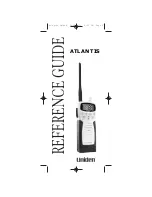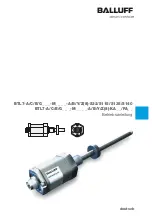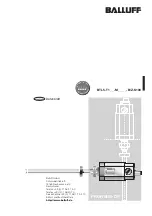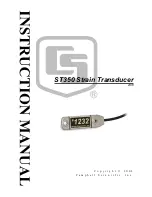
SECTION 2
17
LEAD CHECK
,
DISPLAY ECG
,
ENTER ID,
DISPLAY SPO2,
and
DONE
functions
are performed prior to
starting a new patient.
Lead Check
LEAD CHECK
is a valuable tool for verifying and optimizing signal quality. A graph depicting the impedance
measured at the right arm (RA), left arm (LA), left leg (LL), and V1 through V6 electrodes is displayed from left to
right in vertical columns on the screen. The higher the bar, the better the skin-to-electrode contact.
For good quality transmissions, the bars should be at least 4 bars high. A full bar graph (6 bars) means optimal high
quality and good electrode contact. A low bar graph means poor quality and high electrode impedance. Skin
preparation should be checked for improvement and, if necessary, the electrode(s) should be replaced.
Display ECG Leads
DISPLAY ECG
is used to visually inspect leads I, II, III, V1, V2, V3, V4, V5, and V6. Check the signal quality
and lead amplitude for each lead.
Lead I is the first lead displayed. Use
Up
/
Down
to scroll from lead to lead.
Enter Patient ID
ENTER ID
is used to enter and display an alphanumeric patient identification value. To enter the patient ID, move
the cursor to the desired letter or digit in the alphanumeric table using the
Up/Down
buttons and then select by
pressing
Call
.
To move the cursor one letter or digit to the right on a line, press
Up
. When the cursor reaches the end of the line,
the cursor wraps to the beginning of the line.
To move the cursor down one line, press
Down
. If the cursor is on the bottom line, pressing
Down
moves the
cursor to the top line.
NOTE: The cursor cannot be moved in the left or up direction.
NOTE: Patient ID information entered on the T12/T12S may not be supported by the receiver; check the
receiver device user manual.
Displaying SpO
2
DISPLAY SPO2
is used to visually display the plethysmographic waveform together with the pulse rate, the
oxygen saturation percentage value, and any probe error codes (used for Mortara service troubleshooting).
Summary of Contents for T12
Page 14: ...GENERAL CARE xii ...
Page 42: ...SECTION 3 22 ...
Page 46: ...APPENDIX A 26 ...
Page 52: ...APPENDIX B 32 ...
















































